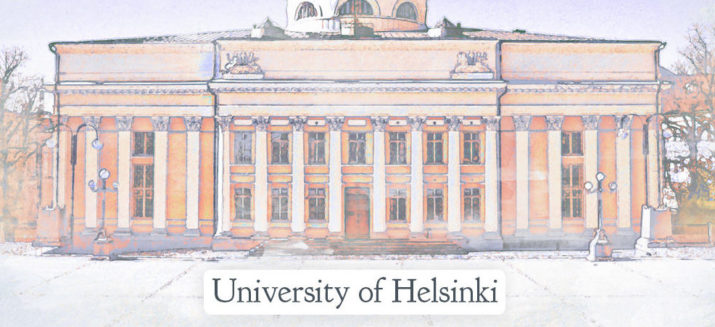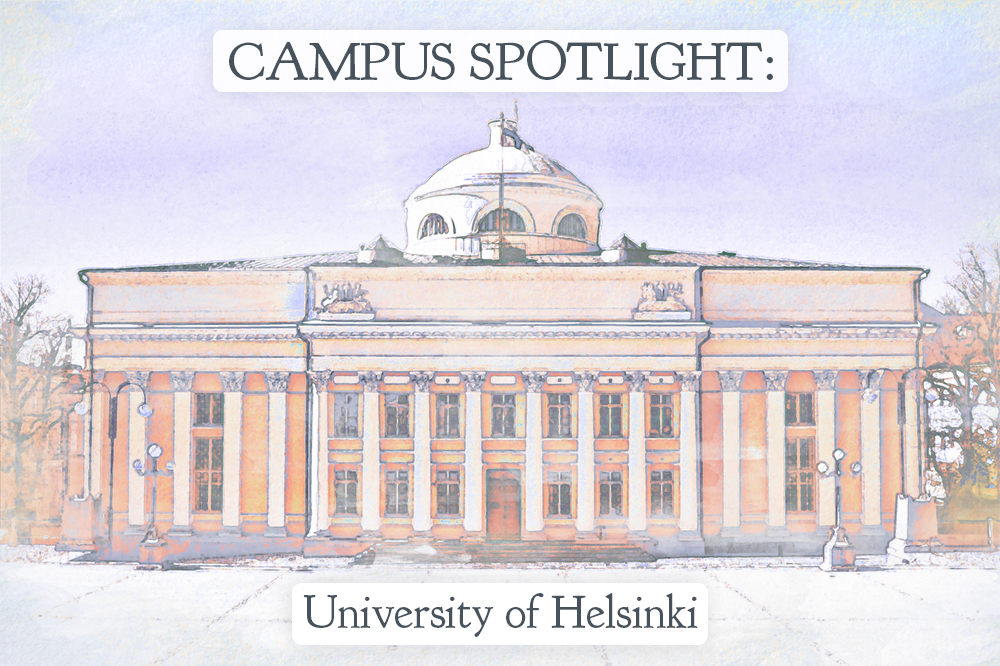

This is part of our special feature, Digitization of Memory and Politics in Eastern Europe.
A spotlight on the University of Helsinki.
By now, we have all encountered “DH” in conference announcements, calls for papers, job postings, or professional profiles of scholars from many disciplines. What stands behind this—still mysterious for many—acronym? The field of Digital Humanities, “DH” for short, has gathered an enormous momentum in record time, aided by the mainstreaming of emerging information technologies and advanced computational capacities, which have moved from the desks of specialized librarians and other IT professionals to the undergraduate classroom. More than a set of technical methodologies, like GIS (Geographic Information System), DH has become a field in its own right, reconfiguring traditional approaches to knowledge production and creating new modes of accessing the humanistic inquiry. Coding paired with literary writing? Textual analysis with data mining? Who is the “digital humanist?” How can data or even metadata (sometimes sources of anxiety) deepen our understanding of human societies and cultures?
In today’s world of analytics, DH is considered a major shift in the ways in which the cultures of qualitative and quantitative technologies are envisaged—i.e. no longer as separate practices, but as sites of convergences that enable the crossing of boundaries that have never been crossed before, and facilitate networking and scale-hopping in intertextuality research. Indeed, Digital Humanities have received much support as “a major expansion of the purview of the humanities [bringing] the values, representational and interpretive practices, meaning-making strategies, complexities, and ambiguities of being human into every realm of experience and knowledge of the world” (Burdick et al. 2012, vii). DH are by definition open, multiple, collaborative, global, interdisciplinary, transtemporal, and transmedia. Numerical tools themselves can become sources of inspiration and the very material of creativity to communicate about and tackle issues such as migration, biodiversity, climate, or inequalities, while also building the necessary substrate for an artificial intelligence of the future. DH provide new tools and forge new creative processes and forms of knowledge diffusion in which writing and designing work in tandem and where computers, books, art, artifacts, or archives not only complement but enrich each other, while also developing communities of practice and innovative networks accelerated by the digital platform and the fluidity of data.
In this Campus Spotlight, and as part of the special feature on digitalization in Europe, EuropeNow seeks to dissipate some of the confusion that still reigns around the association of the humanities (and humanistic social sciences) with the digital world by engaging with one such community of practice at the University of Helsinki, Finland. Created in 2016, the Helsinki Centre for Digital Humanities (HELDIG) exemplifies what collaboration across departments can yield in terms of servicing students, opening up opportunities for faculty research, and connecting with communities outside of academia. HELDIG Director, Eero Hyvönen explains how this ecosystem has established itself around a four-pronged mission based on research, education, infrastructure, and society. Addressing the infrastructural and research dimensions in particular, Eero Hyvönen further discusses how DH also delivers opportunities for inter-institutional linkages in his overview of the Linked Open Data Infrastructure for Digital Humanities in Finland and the Finnish national vision based on the FAIR data principles. Giving an overview of the pedagogical pillar in the HELDIG project, historian Mikko Tolonen, who teaches in the DH program, focuses on curriculum and learning outcomes that include practical applications to real-world problems. Lastly, Eero Hyvönen hones in on the society aspect by presenting an example of how DH is being applied to a specific field precisely to resolve an existing obstacle. Through his consideration of the “Sampo Portals,” a model for publishing linked data, he highlights cultural heritage as a domain where digitalization fosters semantic interoperability through better access, integration, and harmonization of disparate and disconnected cultural heritage contents, be they generated by museums, experts, librarians, or citizens.
-
“The Helsinki Centre for Digital Humanities (HELDIG): Developing the Digital World Together” by Eero Hyvönen
-
“Teaching Digital Humanities at the University of Helsinki” by Mikko Tolonen
-
“National Linked Open Data Infrastructure for Digital Humanities” by Eero Hyvönen
-
“Linked Data in Use: Sampo Portals on the Semantic Web” by Eero Hyvönen
Hélène B. Ducros earned a JD (law) and PhD (human geography) from the University of North Carolina. At EuropeNow, she is Chair of Research and Pedagogy.
References
Burdick, Anne, Johanna Drucker, Peter Lunenfeld, Todd Presner, and Jeffrey Schnapp. 2012. Digital_Humanities. Cambridge, MA: MIT Press.
Published on September 10, 2019.




